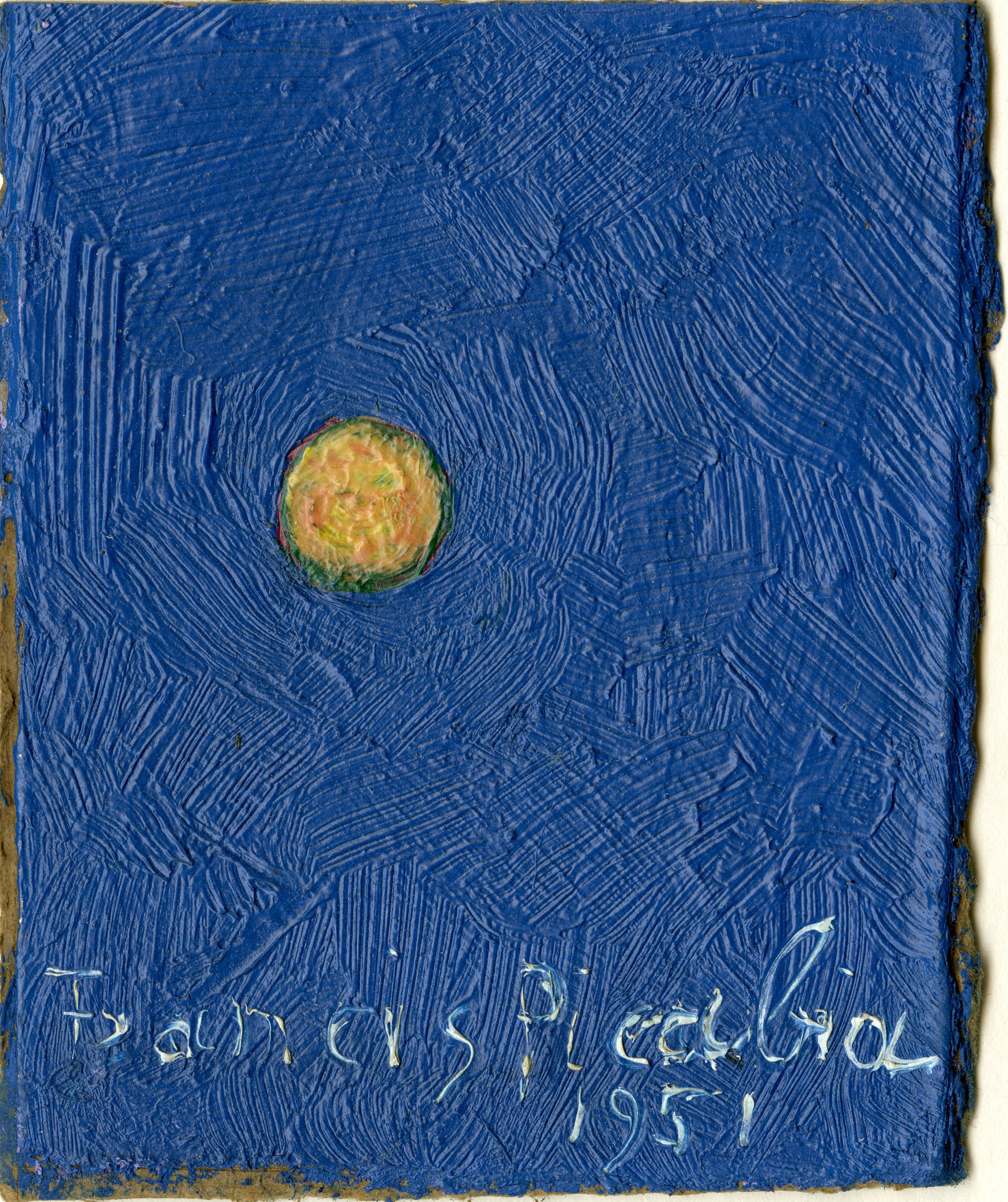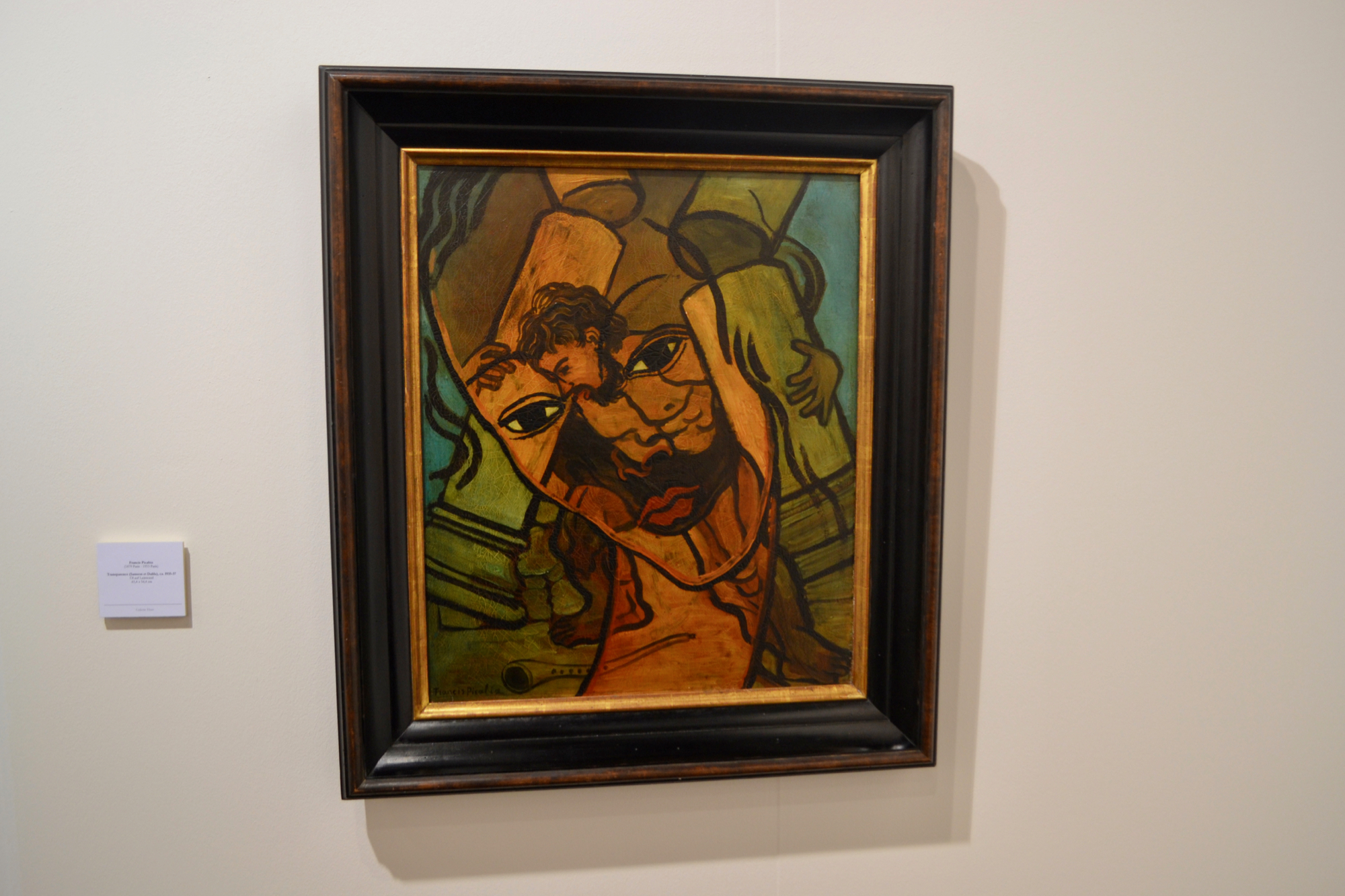[ad_1]

Object on screen may be bigger than in real life: Francis Picabia’s Point (1951), which measures about 4 in. x 3.25 in.
COURTESY GALERIE 1900–2000
“Picabia Alert” takes note of shows and publications that include the wily French artist Francis Picabia (1879–1953).
It has been a full year since we last issued a Picabia alert, but with the return of Art Basel, there is not a moment to waste: it is essential that we do so again.
[Follow all of our coverage from Art Basel 2019.]
Paris’s Galerie 1900–2000, always a dependable source for Picabia, has given over a section of its booth to his art, showing nine of his pieces from across many decades. There’s a ca. 1938 abstraction on an ovular support and three more late abstractions, from 1945 to 1951, including Point (1951), a little golden circle atop a blue rectangle that measures only 10 by 8.3 centimeters, or about 4 inches by 3-and-a-quarter. The signature of the artist, who died two years later, spans the full width of the painting.

Francis Picabia, Transparence (Samson et Dalila), ca. 1935–37.
ARTNEWS
Also at 1900–2000 is Horizon (1908), a spare colored-pencil drawing on an irregular five-sided slice of paper (note what appears to be a little green tree growing amid planes of raw color), and En badinant (1914), a gouache with some of the same churning intensity as Udnie (1913), which is currently on loan to the Kunstmuseum Basel from the Centre Pompidou in Paris for the not-to-be-missed exhibition “The Cubist Cosmos.” (Some Picabia-heads may recall that the Berkshire Museum in Pittsfield, Massachusetts, sold a watercolor of the exact same size and year Sotheby’s in New York through its controversial and hotly contested deaccessioning.)
If that’s not enough Picabia for you—when is there ever enough?—Galerie Michael Haas, of Berlin, has on its stand a work from his 1930s “Transparencies” series, in which figurative images float one atop another. Titled Transparence (Samson et Dalila), ca. 1935–37, it features the former biblical character vigorously ripping down two columns with his bare arms while the latter holds an unreadable, flat gaze.
[ad_2]
Source link

